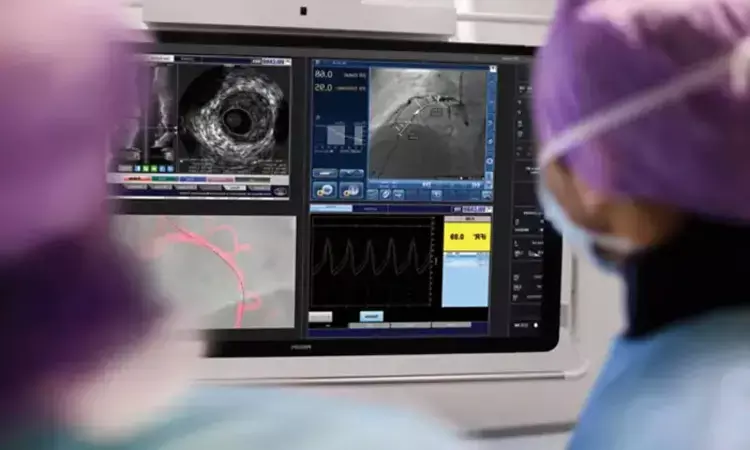- Home
- Medical news & Guidelines
- Anesthesiology
- Cardiology and CTVS
- Critical Care
- Dentistry
- Dermatology
- Diabetes and Endocrinology
- ENT
- Gastroenterology
- Medicine
- Nephrology
- Neurology
- Obstretics-Gynaecology
- Oncology
- Ophthalmology
- Orthopaedics
- Pediatrics-Neonatology
- Psychiatry
- Pulmonology
- Radiology
- Surgery
- Urology
- Laboratory Medicine
- Diet
- Nursing
- Paramedical
- Physiotherapy
- Health news
- Fact Check
- Bone Health Fact Check
- Brain Health Fact Check
- Cancer Related Fact Check
- Child Care Fact Check
- Dental and oral health fact check
- Diabetes and metabolic health fact check
- Diet and Nutrition Fact Check
- Eye and ENT Care Fact Check
- Fitness fact check
- Gut health fact check
- Heart health fact check
- Kidney health fact check
- Medical education fact check
- Men's health fact check
- Respiratory fact check
- Skin and hair care fact check
- Vaccine and Immunization fact check
- Women's health fact check
- AYUSH
- State News
- Andaman and Nicobar Islands
- Andhra Pradesh
- Arunachal Pradesh
- Assam
- Bihar
- Chandigarh
- Chattisgarh
- Dadra and Nagar Haveli
- Daman and Diu
- Delhi
- Goa
- Gujarat
- Haryana
- Himachal Pradesh
- Jammu & Kashmir
- Jharkhand
- Karnataka
- Kerala
- Ladakh
- Lakshadweep
- Madhya Pradesh
- Maharashtra
- Manipur
- Meghalaya
- Mizoram
- Nagaland
- Odisha
- Puducherry
- Punjab
- Rajasthan
- Sikkim
- Tamil Nadu
- Telangana
- Tripura
- Uttar Pradesh
- Uttrakhand
- West Bengal
- Medical Education
- Industry
Is FFR guidance better than intravascular ultrasonography for PCI outcomes ?

A new study published by Bon-Kwon Koo in The New England Journal of Medicine found that fractional flow reserve (FFR) guidance provided similar outcome as intravascular ultrasonography (IVUS) guidance in terms of the composite main outcome of mortality, myocardial infarction, or revascularization at 24 months in patients with moderate stenosis who were being assessed for percutaneous coronary intervention (PCI).
Fractional flow reserve or intravascular ultrasound can be used to guide treatments in patients with coronary artery disease who are being assessed for percutaneous coronary intervention while making decisions about revascularization and stent insertion. However, it is uncertain if using a single approach for both goals would result in different clinical outcomes.
In a 1:1 ratio, 1682 patients who were being assessed for PCI to treat intermediate stenosis were randomly allocated to have either an FFR-guided or IVUS-guided operation. To decide whether to execute PCI and to evaluate the success of PCI, FFR or IVUS were to be employed. If the FFR was 0.80 or below in the FFR group, PCI had to be done. A minimum lumen area of 3 mm2 or less or 3 to 4 mm2 with a plaque load of greater than 70% qualified for PCI in the IVUS group. At 24 months following randomization, the main outcome was a composite of mortality, myocardial infarction, or revascularization. The FFR group's noninferiority to the IVUS group was assessed (noninferiority margin, 2.5% points).
The key findings of this study were:
1. Patients in the FFR group had PCI 44.4% of the time, while patients in the IVUS group had it 65.3% of the time.
2. At 24 months, 8.1% of FFR group patients and 8.5% of IVUS group patients had had a main outcome event (absolute difference, 0.4% points; upper bound of the one-sided 97.5% confidence interval, 2.2% points; P=0.01 for noninferiority).
3. The Seattle Angina Questionnaire results from patients in the two groups were comparable.
Reference:
Koo, B.-K., Hu, X., Kang, J., Zhang, J., Jiang, J., Hahn, J.-Y., Nam, C.-W., Doh, J.-H., Lee, B.-K., Kim, W., Huang, J., Jiang, F., Zhou, H., Chen, P., … Wang, J. (2022). Fractional Flow Reserve or Intravascular Ultrasonography to Guide PCI. In New England Journal of Medicine (Vol. 387, Issue 9, pp. 779–789). Massachusetts Medical Society. https://doi.org/10.1056/nejmoa2201546
Neuroscience Masters graduate
Jacinthlyn Sylvia, a Neuroscience Master's graduate from Chennai has worked extensively in deciphering the neurobiology of cognition and motor control in aging. She also has spread-out exposure to Neurosurgery from her Bachelor’s. She is currently involved in active Neuro-Oncology research. She is an upcoming neuroscientist with a fiery passion for writing. Her news cover at Medical Dialogues feature recent discoveries and updates from the healthcare and biomedical research fields. She can be reached at editorial@medicaldialogues.in
Dr Kamal Kant Kohli-MBBS, DTCD- a chest specialist with more than 30 years of practice and a flair for writing clinical articles, Dr Kamal Kant Kohli joined Medical Dialogues as a Chief Editor of Medical News. Besides writing articles, as an editor, he proofreads and verifies all the medical content published on Medical Dialogues including those coming from journals, studies,medical conferences,guidelines etc. Email: drkohli@medicaldialogues.in. Contact no. 011-43720751


